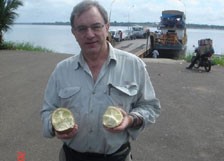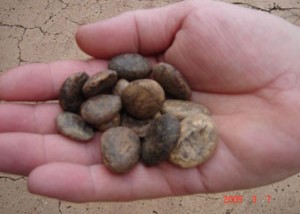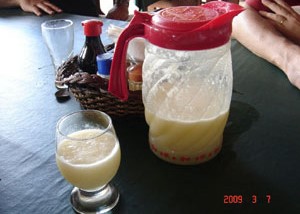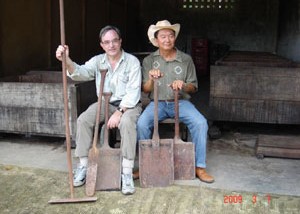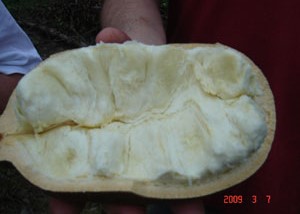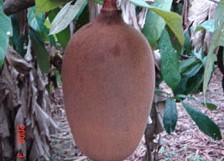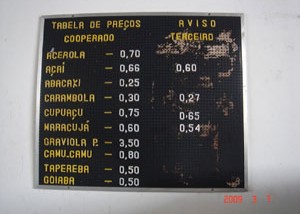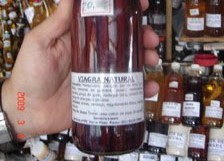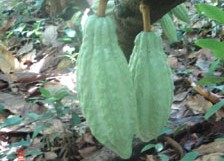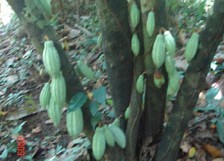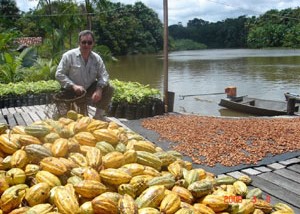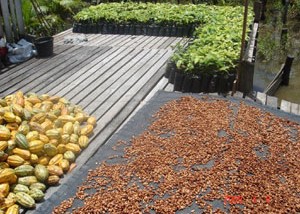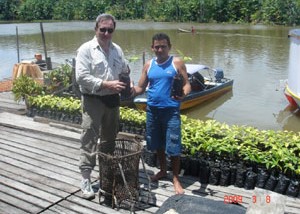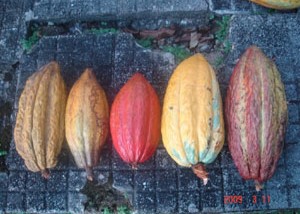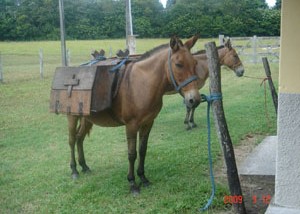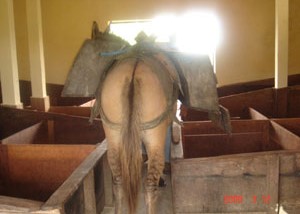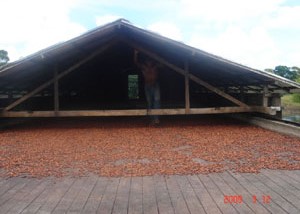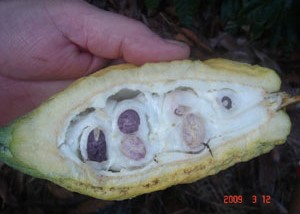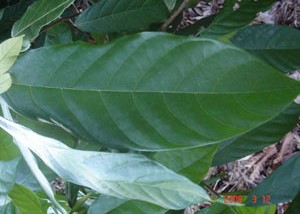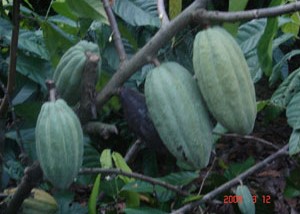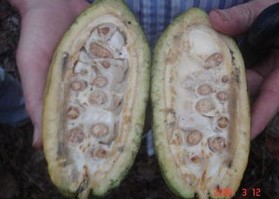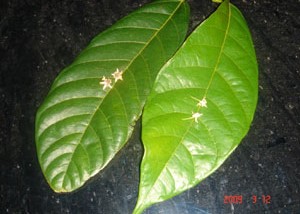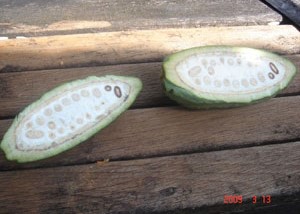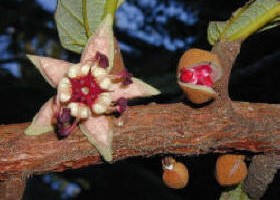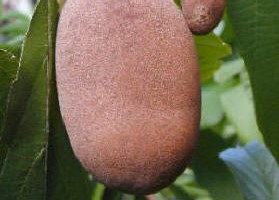Brazil
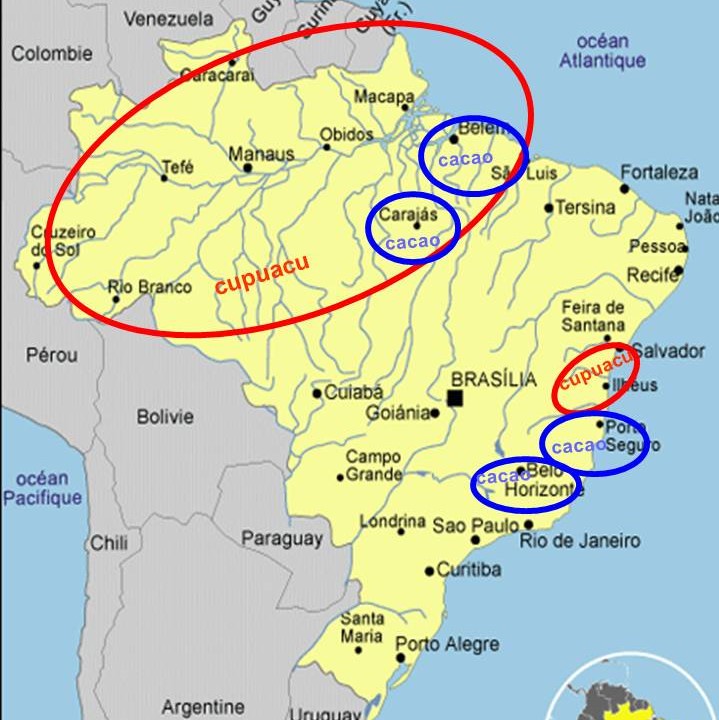
This immense country (8,547,400 km2 and 183,987,291 inhabitants) is a large producer of cocoa beans, but also the cradle of the cocoa tree.
By way of reminder, the cocoa tree was originally a wild tree of the Amazon basin, and the Indian populations used the pulp from the fruit to make a smooth and refreshing beverage, and later on the bean to make cocoa-flavoured beverages.
The Criollo cocoa tree (beans that are white inside) is said to stem from the northern part of the Amazon, from where the species migrated to Venezuela and Mexico.
The Forastero cocoa tree (beans that are purple inside) is said to have migrated from the south of the Amazon basin to the rest of Brazil.
The total production of cocoa beans in Brazil reached 300,000 to 350,000 tonnes during better years.
Today, the tonnage is around 150,000.
The “escoba de bruja” [literally the “witch’s broom,” a plant disease] is actually taking its toll on production.
It has become endemic in several regions of Brazil. Farmers have to live with – but above all to fight against – it, which is not yet the case everywhere.
Many plantations we have visited are composed of old trees (50 to 100 years).
In quite a number of plantations, these old trees have been grafted with more resistant clones of the Trinitario variety.
We nonetheless thought that the farmers had still too little knowledge both as regards the choice of clones and the way to combat the “”escoba de bruja.”
Bean processing industries had in the past attached too much importance to the cocoa butter content of the bean and not enough to the taste that the bean gives to the final product: chocolate.
Consequently, in many cases, the clones proposed to farmers take little if any account of the flavour and taste aspects and moreover, the beans are often not even fermented.
The Forastero variety is however now gradually being replaced by Trinitario trees, which are more suited for the production of good chocolate.
There are 3 large cocoa-producing regions in Brazil:
- the Amazon basin: 56,000 tonnes
- Bahia: 70,000 tonnes
- Espiritu Santu: 10,000 tonnes
The production season varies widely from one region to another in Brazil.
Para (Amazon): March to December
Bahia: May to January
Linares: June to February.
In certain regions, we also find CUPUACU (theobroma grandiflorum).
Its pulp gives a delicious beverage or jam.
The bean is larger and more square than the cocoa bean.
It is possible to make milk chocolate of more than acceptable quality with it.
The advantage of the cupuacu is that it does not contain theobromin and can thus be used to make chocolate acceptable to the adherents of certain religions that proscribe stimulants (e.g. the Mormons).
We have also been able to observe a cocoa tree with beans that were white inside in the Linares region, called “catongo.”
Its presence in the south of Brazil is surprising. Normally, it should have been a late arrival of a plant from the north of the Amazon basin (Criollo).
But, if it were native to the region, it would be a great discovery, because Criollo trees with white beans purportedly stem from the north of the Amazon basin.
Theobroma grandiflorum, familie van de Sterculiaceae.
- English : cupuassu
- Spanish : cupuasú, copoasú, blanco de cacao
- Portuguese : cupuaçu, pupu, pupuaçu
Origin and geographic distribution
The Cupuaçu originated in south and south-eastern Amazonia in Brazil, and is also native to the states of Pará and Maranhao. Today, it can be found close to the Tapajos, Xingu and Guama rivers.
The tree
The cupuaçu belongs to the cacao family (Theobroma cacao) and is a close relative.
The cupuaçu is a tree that can grow as high as 20 m at maturity but when cultivated it is maintained at 6-8m. The canopy can reach 7m in diameter.
The oblong leaves may be up to 25-35cm wide. The inflorescence has 3 to 5 flowers with purple petals.
Climate
The cupuaçu is grown in the humid tropics (annual rainfall of 1,800 mm, average temperature of 23°C). It grows well in deep soils with high fertility.
Seasons
Flower bud development takes 15 days, while fruits mature four months after fertilisation.
A five-year-old tree produces 20 to 30 fruits a year, a mature tree 60 to 70.
The Fruit
The fruit has a very strong aromatic potential.
The oblong-shaped fruits measure 12 to 25 cm long, are 10 to 12 cm in diameter and weigh 1 to 2 kg.
Each fruit contains roughly 50 seeds which are surrounded by a mucilaginous pulp..
The seeded cupuaçu fruit contains pulp (46%), rind (38%) and seeds (16%). The seedless, less productive variety of cupuaçu contains 67% pulp but the pulp is less flavourful.
Nutritional composition
On the basis of the high linoleic acid content the seed butter would be expected to have a lower melting point than cocoa butter.
Organoleptic characteristics
The pulp of the fruit is very flavourful. It has an acid taste, leaving an aftertaste of cocoa and a chemical aroma reminiscent of medicinal products.
The pulp has a smooth appearance.
Utilisation
The pulp is used to make juices, ice creams, liqueurs, wines and jellies. The pulp is also sold frozen.
The pulp is extracted by hand or mechanically with a depulping machine, then homogenised and pasteurised. The machines can process 2,500kg of fruit an hour.
The cupuaçu seeds are used to make chocolate. The volume of chocolate produced by local industries in Pará (Brazil) has increased, although the fruits are still harvested from wild trees.
The use of cupuaçu seeds for making chocolate is restricted to the Solimões, Madeira and Tocantins valleys of the Amazon.


